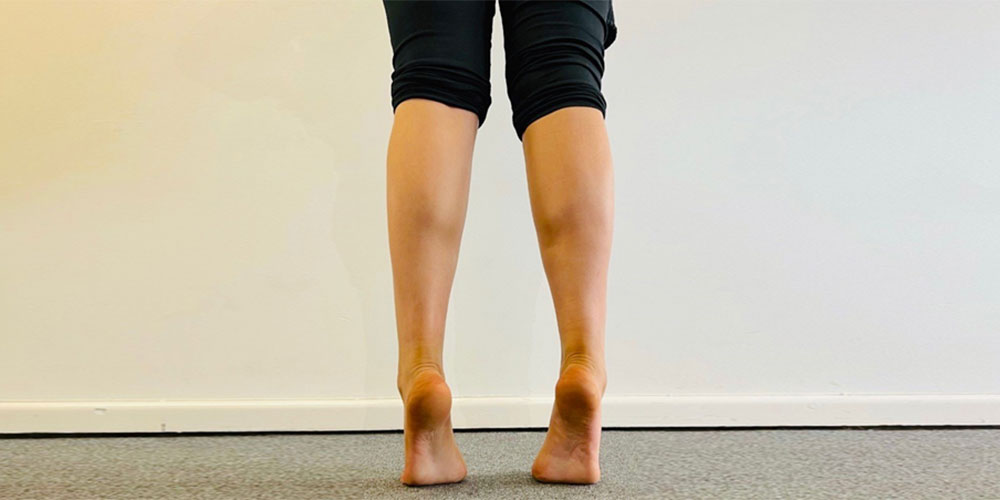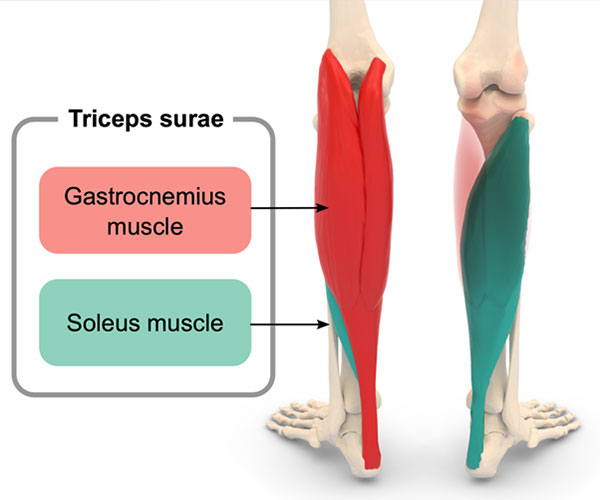Calf Pain | Is it Soleus or Gastrocnemius Strain?
Sunday, May 15, 2022
Calf strains are common injuries seen in general practice and sports injury clinics. Differentiating between strains of the soleus muscle or the gastrocnemius muscle, that is, two of the three separate muscles that make up what is commonly called the “calf muscle”, is important for effective treatment and prognosis, especially successful prevention of recurring injury.

What does calf strain feel like?
Sub-acute symptoms, that is, tightness and stiffness developed over days to weeks, mild swelling and disability, are reported for soleus strains.
Acute symptoms, that is, a sudden twinge ranging from mild to severe pain, disability and swelling are reported for gastrocnemius strains.
What causes calf strain?
When there is a clear mechanism of injury: like acceleration with the knee extending and ankle in dorsiflexion; or sudden eccentric overstretch, e.g. ankle drops off the kerb, you are likely to have a gastrocnemius strain.
Soleus strains often don’t have a clear mechanism of injury, but steady-state running is a common cause.
How to tell if I have a calf strain?
A physical examination including hands-on testing, strength and stretch testing, by a trained professional, like the Physiotherapists at Physio Inq Engadine and Physio Inq Sutherland, will allow accurate diagnosis of the site and severity of the injury.

Test |
Soleus |
Gastroc |
Where are they tender? |
Deep to the gastrocnemius |
On the surface |
Where is it usually injured? |
Lateral (outer leg) |
Medial (inner leg) |
Knee To Wall (flexibility) |
Front leg (bent knee) reproduces patient’s symptoms |
Back leg (leg straight) reproduces patient’s symptoms |
Resisted movement (strength) |
Plantarflexion with bent knee |
Plantarflexion with straight knee |
Heel raise (strength) |
Difficult with bent knee calf raise |
Difficult with straight knee calf raise |
Can Physiotherapy help Calf Muscle strains?
Yes, seeing a Physiotherapist, such as the staff at Physio Inq Engadine and Physio Inq Sutherland, can assist with the relief of symptoms and long term treatment of calf strains of the soleus or gastrocnemius. Indeed, we also see lots of people for injuries to the third muscle in the calf, the plantaris.
What is the treatment for calf strains?
Gold standard treatment for soleus strains and gastrocnemius pain is physiotherapy management.
- RICE / Referral to Physiotherapy ASAP
- Soft tissue therapy
- Dry needling
- Exercise – Restore mobility and strength in the ankle and knee
- Graded return to sport / activity
- Plyometric exercises – required for anyone that needs to jump!
- Addressing any risk factors
Prognosis has been shown to be positively influenced with physiotherapy interventions.
Calf strain is a common issue treated by Physiotherapists. At Physio Inq, our Physiotherapists will be able to do a thorough testing and diagnosis, as well as provide gold standard treatment to help you live a life with less limits. Contact us today to book your consultation.
![]() Written on behalf of Physio Inq Engadine
Written on behalf of Physio Inq Engadine
